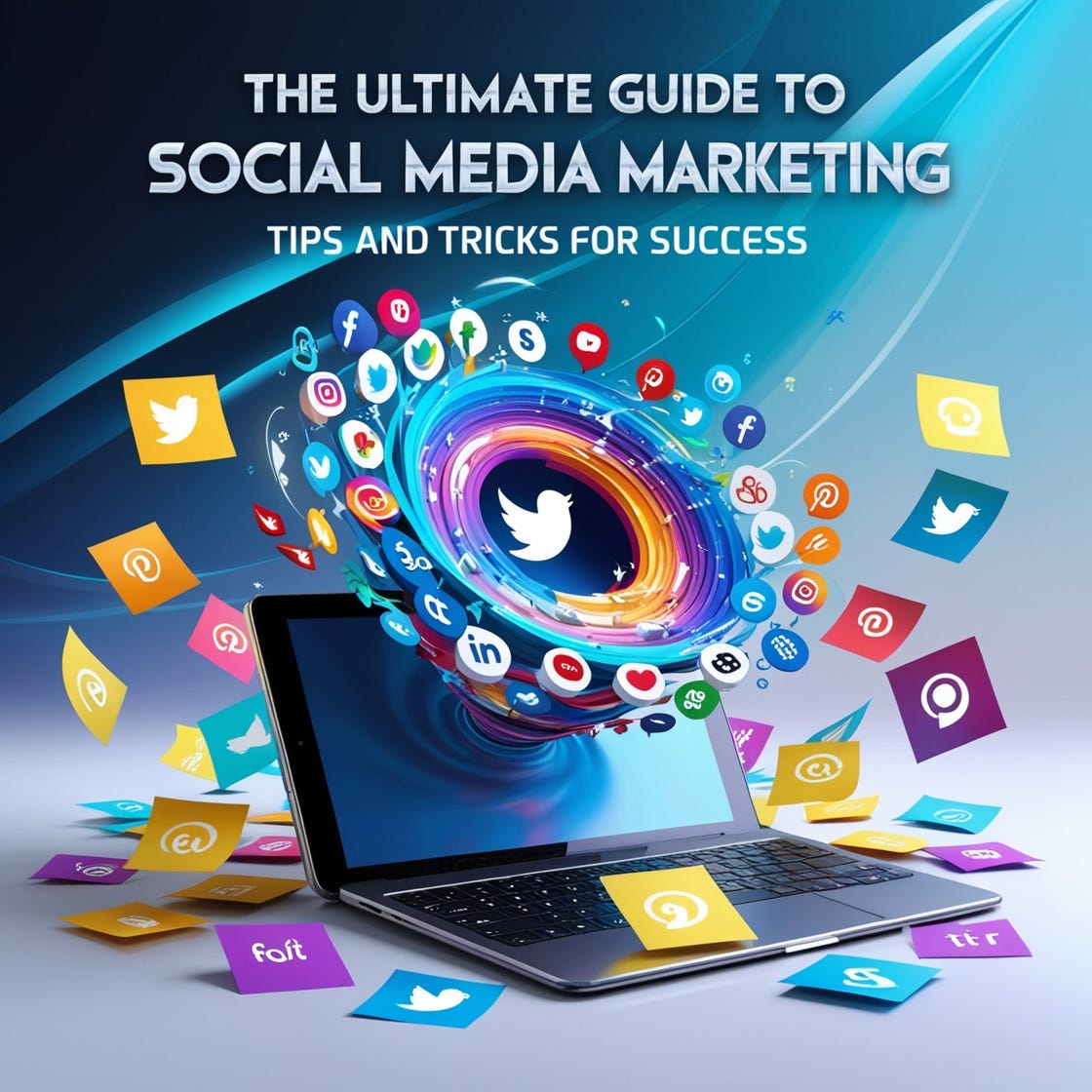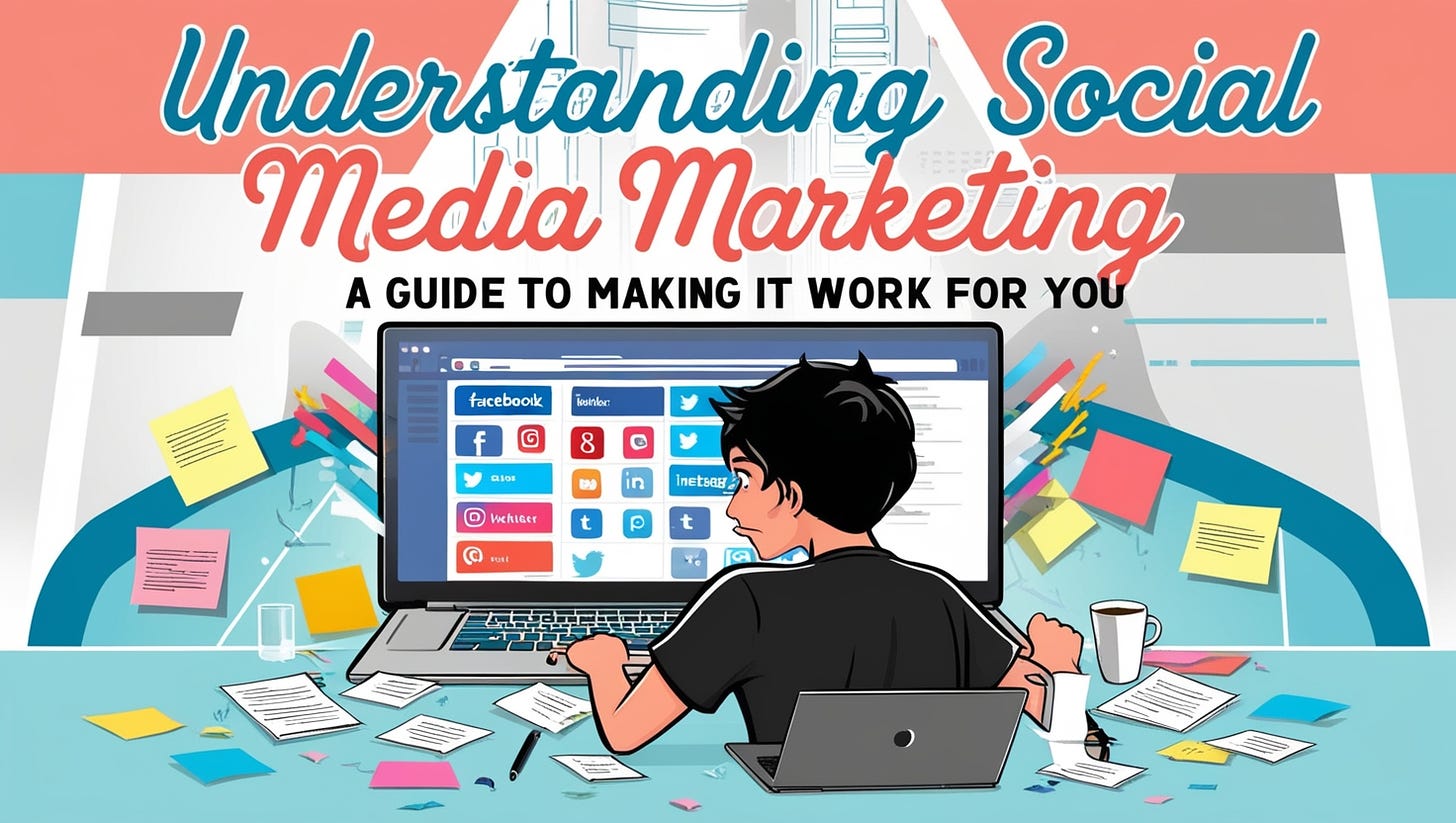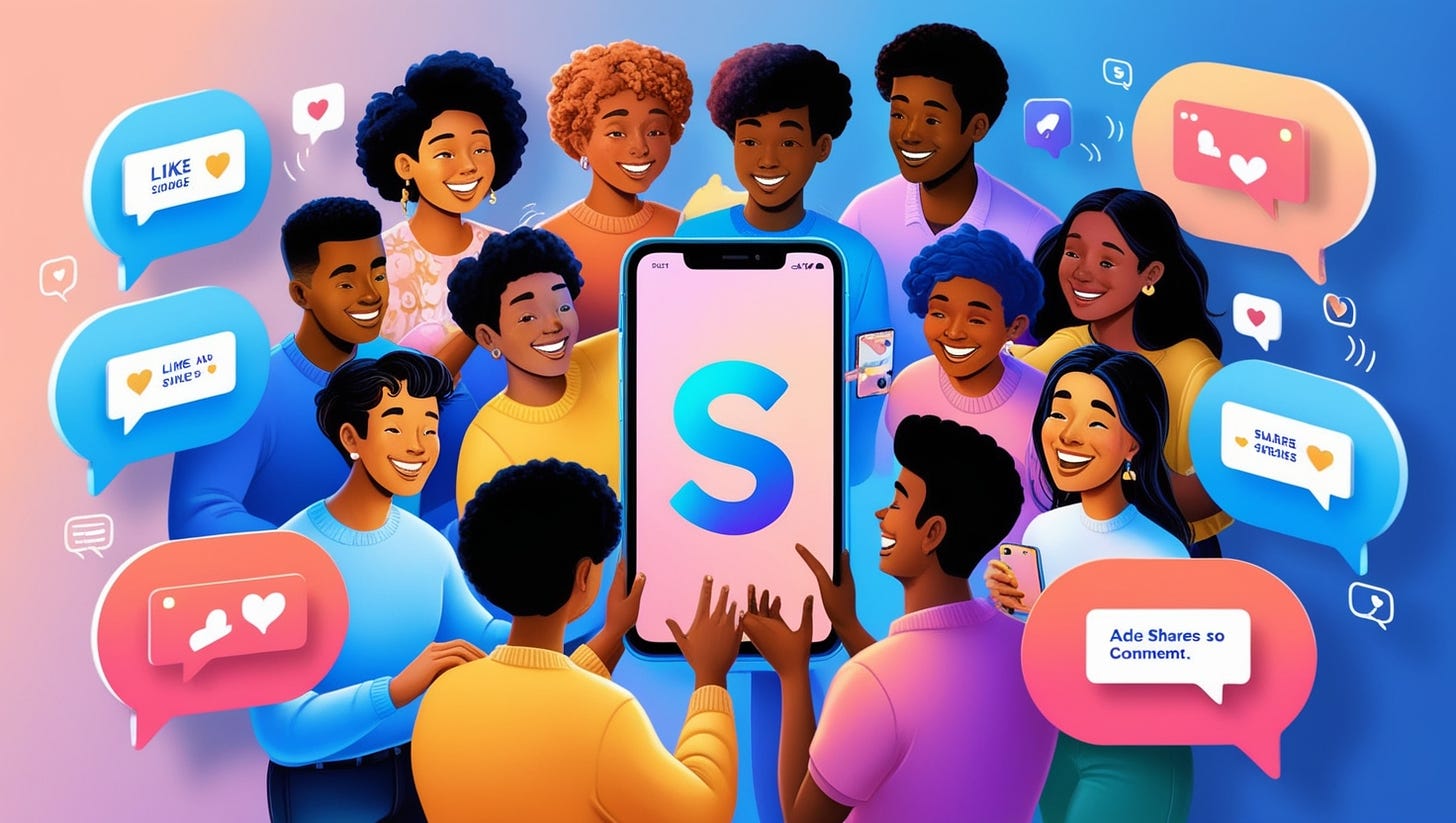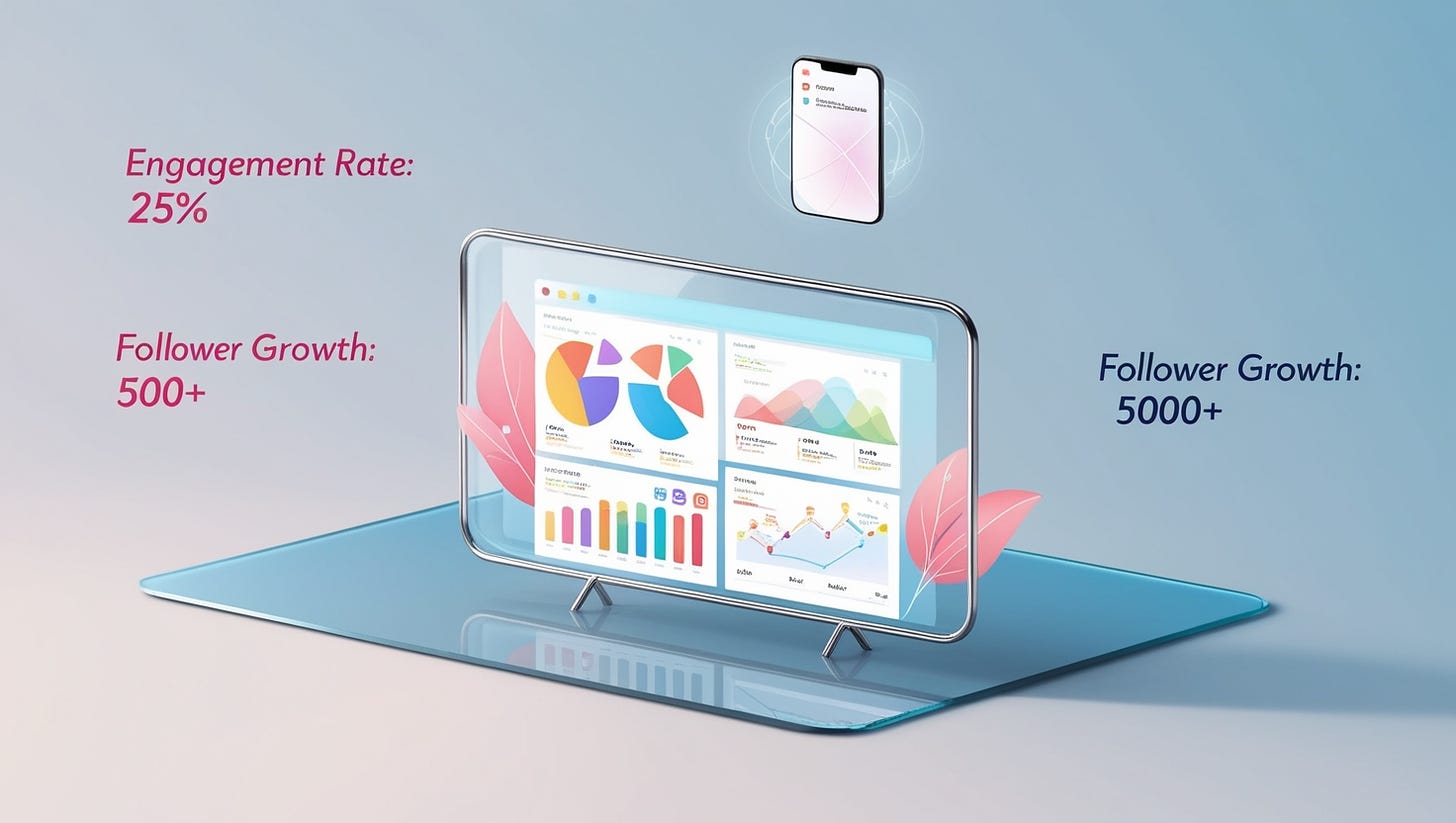The Ultimate Guide to Social Media Marketing: Tips and Tricks for Success
Social Media Marketing Tips and Tricks for Success
In the fast-paced digital landscape, social media marketing has emerged as a powerful tool for businesses to reach their target audience, build brand awareness, and drive conversions. With billions of users active across platforms like Facebook, Instagram, LinkedIn, Twitter, and TikTok, mastering social media marketing is essential for brands of all sizes.
This comprehensive guide will cover everything you need to know about social media marketing, offering actionable tips and tricks to help you grow your brand, engage your audience, and achieve measurable results.
Helpful Content: Top 10 Digital Marketing Companies in Noida
1. Understanding Social Media Marketing
What is Social Media Marketing?
Social media marketing is the process of creating, publishing, and sharing content on social media platforms to promote products or services, build community engagement, and drive website traffic. It involves using various strategies, including organic posts, paid advertising, influencer collaborations, and community management, to foster brand visibility.
Why is Social Media Marketing Important?
Global Reach: Social media platforms allow brands to reach a vast global audience, making it easier to connect with potential customers.
Engagement: Unlike traditional marketing, social media allows for two-way communication, where brands can engage directly with their audience, creating a more personalized experience.
Cost-Effective: Many social media platforms offer free access, while paid options allow for highly targeted advertising at a relatively low cost compared to other marketing methods.
Brand Loyalty: Regular interaction with your audience helps build loyalty and trust, keeping your brand top of mind.
2. Choosing the Right Social Media Platforms
Not all social media platforms are created equal. Each platform has a unique audience, tone, and best practices, so it’s essential to select the ones that align with your brand goals and target audience.
Popular Social Media Platforms:
Facebook: Best for reaching a broad demographic, building community, and sharing a variety of content formats like posts, videos, and live streams.
Instagram: Great for visual content, targeting younger demographics, and utilizing features like Stories, Reels, and Shopping.
LinkedIn: Ideal for B2B marketing, networking, and sharing industry insights or professional content.
Twitter: Effective for real-time updates, trending topics, and engaging with your audience through concise messages.
TikTok: Growing rapidly, TikTok is perfect for brands that can leverage short-form, creative video content targeting Gen Z and Millennials.
Pinterest: Best for image-driven content, especially for industries like fashion, home decor, and food, where users seek inspiration.
How to Choose the Right Platform:
Identify Your Audience: Understand the demographics of each platform to ensure you are where your target audience is most active.
Consider Your Content Type: Choose platforms that complement your content strategy. For example, Instagram is perfect for brands focused on visual storytelling, while LinkedIn is better for long-form professional content.
Research Competitors: Analyze where your competitors are most active and how their audience engages with their content.
3. Building an Effective Social Media Strategy
Before diving into content creation, it’s critical to have a solid social media strategy in place. A well-thought-out plan will help guide your efforts, ensuring they align with your overall business objectives.
Steps to Build a Social Media Strategy:
Set Clear Goals: Define what you want to achieve through social media. Common goals include:
Increasing brand awareness
Driving website traffic
Generating leads
Boosting sales
Building community engagement
Define Your Target Audience: Create detailed audience personas to understand your followers' interests, pain points, and behavior. Tailoring your content to their preferences will increase engagement and effectiveness.
Audit Your Current Social Media Presence: If you’re already on social media, analyze your current accounts to understand what’s working and where improvements are needed. Look at metrics like follower growth, engagement rates, and content performance.
Develop a Content Calendar: A well-organized content calendar helps you maintain consistency and plan posts around events, holidays, or product launches. It also allows for a more balanced mix of content types (e.g., promotional, educational, and entertaining).
Set KPIs and Metrics: Identify key performance indicators (KPIs) that will help you track progress toward your goals. Common social media KPIs include follower growth, engagement rate, reach, and conversion rate.
4. Creating Engaging Content
Creating high-quality, engaging content is at the heart of any successful social media marketing campaign. Your content should not only promote your brand but also resonate with your audience and encourage interaction.
Types of Content to Create:
Images: Use high-quality visuals that align with your brand’s aesthetic. Tools like Canva and Adobe Spark can help you create professional-looking graphics.
Videos: Short-form video content (e.g., Instagram Reels, TikTok) is highly engaging. You can create product demonstrations, behind-the-scenes videos, tutorials, or user-generated content.
Infographics: Shareable infographics can help convey complex information in a visually appealing way.
User-Generated Content (UGC): Encourage your followers to create content featuring your products or services. UGC builds trust and authenticity around your brand.
Stories: Use Instagram and Facebook Stories for real-time updates, behind-the-scenes looks, and interactive content like polls and questions.
Content Best Practices:
Be Consistent: Regular posting keeps your audience engaged and your brand visible. Stick to a posting schedule and maintain consistent messaging across platforms.
Tailor Content for Each Platform: Don’t copy and paste the same content on every platform. Customize your content to suit the format, audience, and tone of each platform.
Use Hashtags: Hashtags can help increase the reach of your posts, especially on platforms like Instagram and Twitter. Use relevant, trending hashtags to boost visibility.
Engage with Your Audience: Respond to comments, messages, and mentions to foster community engagement. Engaging with your audience shows that you value their input and strengthens relationships.
5. Growing Your Social Media Following
Gaining followers takes time and effort, but with the right strategies, you can grow your social media audience effectively.
Tips for Growing Your Following:
Collaborate with Influencers: Partnering with influencers can help you reach new audiences. Choose influencers who align with your brand and have an engaged following.
Host Contests and Giveaways: Encourage users to follow your account, like posts, and tag friends in exchange for a chance to win a prize. This can rapidly increase your reach.
Engage Consistently: Comment on posts, share user content, and participate in conversations within your niche. Active engagement helps increase visibility and builds relationships with potential followers.
Use Paid Promotions: Boosting posts or running targeted ads can accelerate follower growth by reaching people who may not have discovered your brand organically.
6. Social Media Advertising
Organic social media efforts are essential, but paid advertising can significantly enhance your reach, engagement, and conversion rates.
Types of Social Media Ads:
Facebook & Instagram Ads: Highly targeted ads based on user demographics, interests, and behavior. Options include carousel ads, video ads, and stories ads.
Twitter Ads: Promoted tweets and accounts help you reach a broader audience. Use Twitter ads for time-sensitive campaigns or trend-based promotions.
LinkedIn Ads: Best for B2B marketing, LinkedIn offers sponsored content, InMail, and text ads that target professionals based on job title, industry, and more.
TikTok Ads: In-feed video ads or brand takeovers can be effective on this platform, especially if your brand appeals to younger audiences.
Ad Tips and Tricks:
Target the Right Audience: Use platform-specific targeting options to reach your ideal customers.
A/B Test Your Ads: Experiment with different ad formats, copy, and visuals to see what performs best.
Set a Clear CTA: Each ad should have a clear call-to-action (CTA), whether it’s to visit your website, make a purchase, or sign up for a newsletter.
7. Measuring Social Media Success
Tracking the effectiveness of your social media efforts is crucial to understanding what’s working and what needs improvement. Use analytics tools to monitor performance across different platforms.
Key Metrics to Track:
Engagement: Likes, shares, comments, and direct messages.
Reach and Impressions: How many people saw your content and how often.
Click-Through Rate (CTR): The percentage of people who clicked on a link or ad.
Conversion Rate: How many social media users completed a desired action, such as making a purchase or signing up for a newsletter.
Follower Growth: How quickly your audience is growing over time.
8. Advanced Tips and Tricks for Social Media Marketing
To take your social media marketing efforts to the next level, try these advanced tactics:
Leverage Automation Tools: Tools like Hootsuite, Buffer, and Sprout Social can schedule posts, track performance, and manage multiple accounts, saving time and effort.
Utilize Social Media Stories: Stories on platforms like Instagram and Facebook offer an opportunity for real-time engagement and more casual, behind-the-scenes content.
Host Live Events: Live streaming on platforms like Instagram Live or Facebook Live fosters real-time interaction and boosts engagement.
Focus on Community Building: Instead of just broadcasting messages, focus on building a loyal community by encouraging conversations and user-generated content.
Monitor Trends: Stay up-to-date with social media trends and features to keep your content fresh and relevant.
Conclusion
Social media marketing is an essential tool for businesses looking to connect with their audience, build brand awareness, and drive conversions. By understanding your target audience, crafting an effective strategy, and using the right platforms and content, you can unlock the full potential of social media.
With the tips and tricks outlined in this guide, you’re well on your way to social media marketing success. Remember to continuously test, optimize, and engage with your audience to stay ahead of the competition. Happy marketing!
For more insights on digital marketing and SEO, visit Buzzz Booster Blog.












